For the best looking lawn on the block, you'll need a lawnmower with sharp blades that slice through grass with ease. But what angle should you use when sharpening your blades? We've researched this conundrum, and here's what you need to know:
When you sharpen your lawnmower blades, follow the pre-existing angle of the blade. In most cases, this will be 35°, but it can vary from 30° to as high as 45°.
In this article, we'll take a closer look at how you can sharpen your lawnmower blades at home using several different methods. We'll also get you the best advice on how to know your blades are due for a sharpening. Read on to find out more!
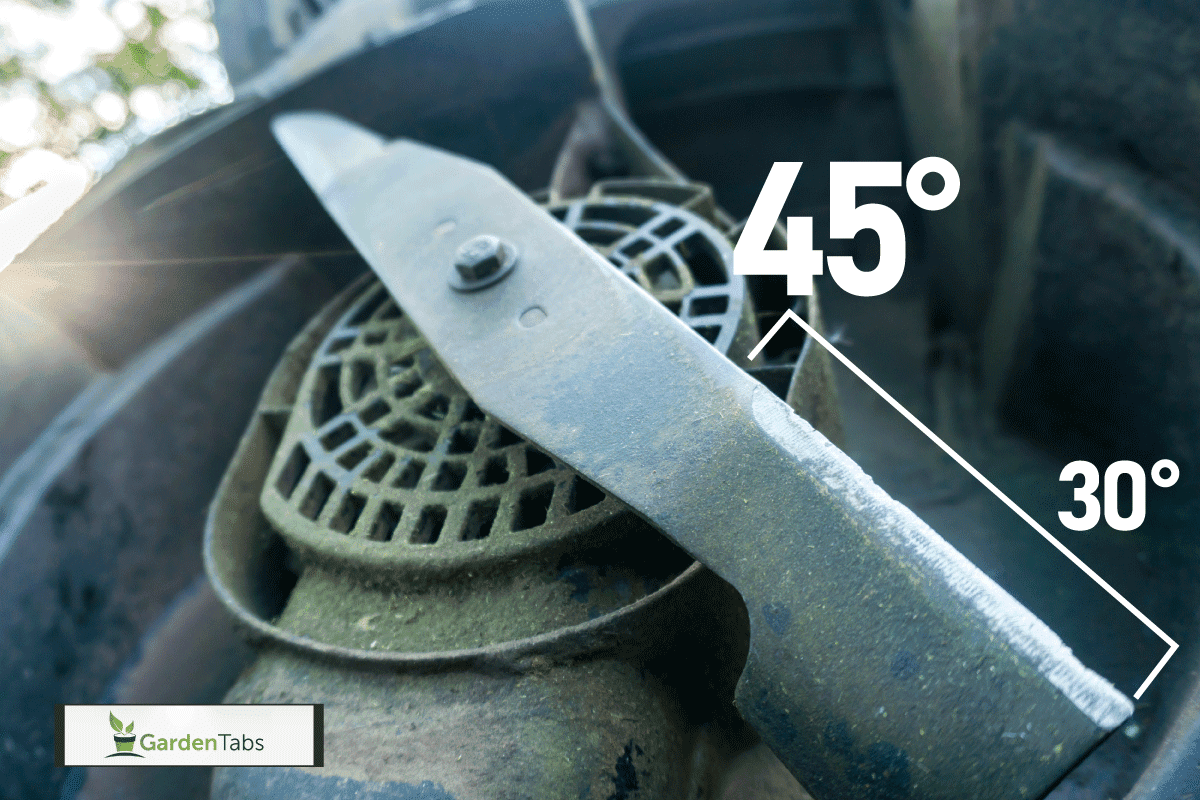
What's the best angle for lawnmower blades?
When you need to sharpen your lawnmower blades, the best angle to follow is the one the blades came with.
This is the easiest angle to find because you can simply follow the existing angle in the blade. Instead of setting a new angle, you can just work out any nicks, clean up the bur, and sharpen the cutting edge.
This angle will generally fall between 30 and 45°. You don't need a razor-sharp blade for your lawnmower, as it will require more frequent sharpening and maintenance.
What tools do you need to sharpen lawnmower blades?
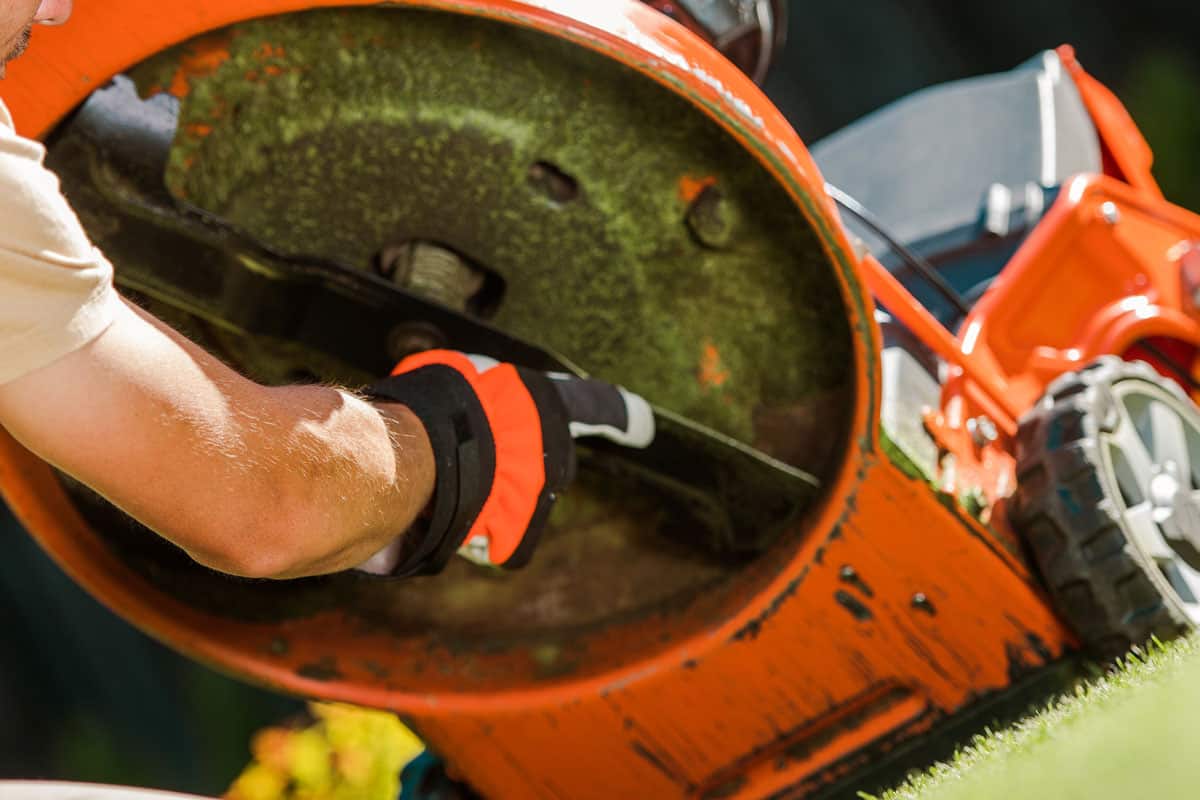
The first step to any project is preparing your tools. When sharpening lawnmower blades, the tools you need fall into three main categories: safety, assembly, and sharpening.
Safety
- Gloves
- Goggles
- Earplugs
For safety, you will need at least a good pair of heavy-duty work gloves. These will keep your hands safe while you work.
Depending on the method you use to sharpen your blades, you may also need eye protection. You'll be sending bits of metal flying from your blades as you sharpen them. A good pair of goggles will keep them out of your eyes.
Click here to see these Dewalt work goggles on Amazon.
Finally, some sharpening methods are noisy and can damage your ears over time. For these methods, keep ear plugs handy. You'll thank yourself later in life.
Assembly
- Socket wrench
To remove the nuts that hold your lawnmower blade in place, you'll need a good socket wrench. Make sure that the socket you use fits the nut correctly. This is why it's good to have a high-quality set with a variety of sizes.
Click here to see this socket wrench set on Amazon.
Sharpening
- Metal File
- Vice -or-
- Power Drill
- Grinding Stone Drill Bit
- Vice -or-
- Bench Grinder
When it comes to actually sharpening your lawnmower blades, there are several methods you can use. The three most common approaches involve using a metal file, a power drill with a grinding stone attachment, or a bench grinder.
We'll cover each in more detail in the following section.
How to Sharpen Lawnmower Blades
Now that we have our tools ready, let's go over the whole process to actually sharpening our blades.
Remove the spark plug wires
Whenever working with a lawnmower, safety is paramount. That's why removing the spark plug wires should be your very first step.
This will prevent the lawnmower from starting as you remove the blades and can easily save you a finger or two and a trip to the ER.
The spark plug wires are in a rubber tube that connects to the spark plug at the front of your lawnmower. Simply disconnect the tube from the spark plug and you're good to go.
Remove the lawnmower blade
Next, you'll need to remove the lawnmower blade. To access it, tip your lawnmower back. Tipping it sidewise can cause it to lose oil or gas.
Putting your lawnmower on a work table makes it easier to access the blade without getting on your hands and knees.
Here, you'll want to wear your work gloves and get your socket wrench ready. Hold the blade in place with one hand as you loosen the nuts with the other.
Some prefer to hold the blade in place with a piece of lumber. While this can be effective, it can also bend the blade if you're not careful.
Remember to keep the nuts somewhere they won't get lost.
Sharpen the blade
Now it's time to sharpen the blade. Let's look at each of the methods mentioned earlier.
How to sharpen a lawnmower blade with a metal file
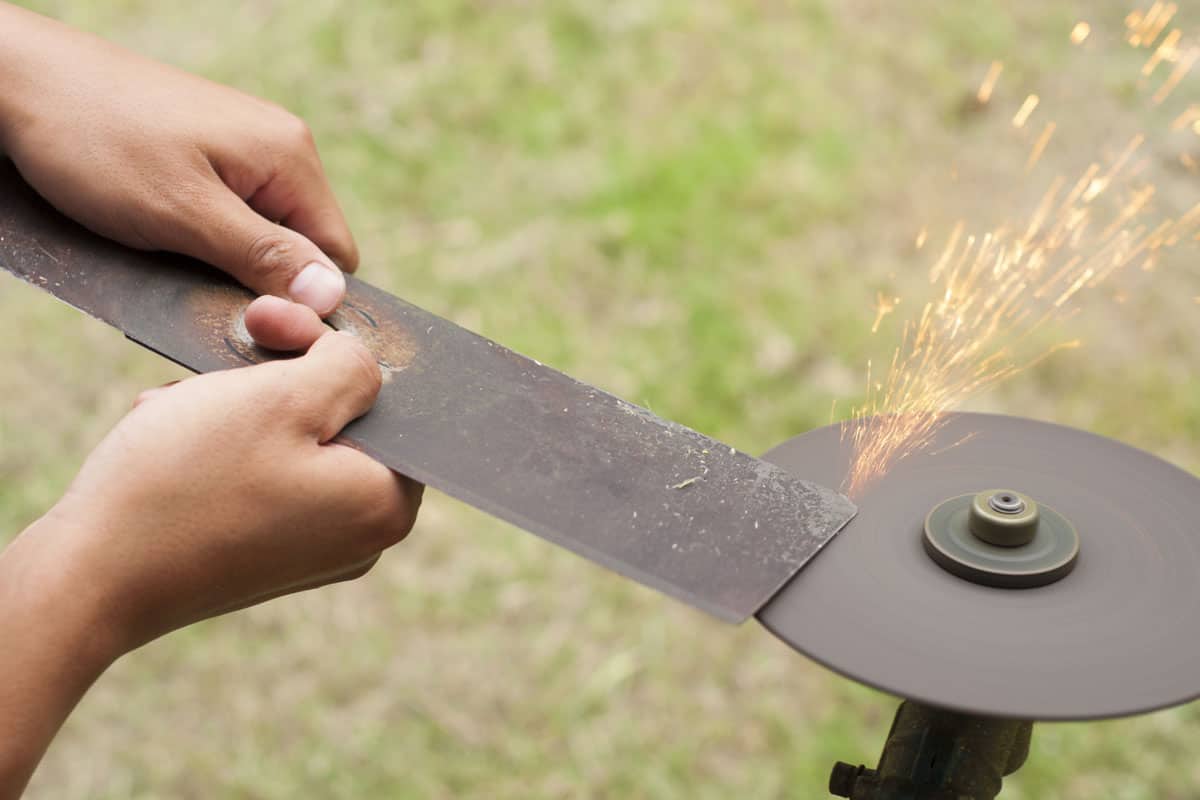
The most low-tech option is to use a metal file. To do so, you should first secure the blade to your workbench with a vice. Make sure it is secure enough that it won't move while you sharpen it.
With a hand on both sides of the file, trace the angle of the blade in steady movements. Don't file back and forth; instead, move at an angle down and toward the end of the blade.
After sharpening one side, flip the blade in the vice and work on the other end in the same fashion.
How to sharpen a lawnmower blade with a power drill
For a faster way to sharpen your lawnmower blades, you can use a power drill. These days, you can find sharpening stones like the ones below that are specifically designed for lawnmowers and fit most power drills.
Click here to see these lawnmower blade sharpening stones on Amazon.
With these sharpening stones, the plastic acts as a guide to keep the desired angle as you sharpen your blades.
With the blade secured in a vice, simply sharpen the blade by placing it between the plastic guide and the stone until you've reached your desired sharpness.
Be sure to wear protective goggles and earplugs when using these products.
How to sharpen a lawnmower blade with a bench grinder
The fastest way to sharpen your blades is with a bench grinder. Bench grinders also have the advantage of being better able to remove nicks or larger chunks missing from the blade after hitting rocks or concrete.
A slow-speed bench grinder will work best for this. Simply ease the blade into the grinder at the desired angle. Hold the blade firmly to maintain the angle as you move it from side to side.
Switch to the other side of the blade once you've reached your desired sharpness.
This method can create a lot of sparks and noise, so be sure to wear earplugs and goggles.
Check the blade
Whichever method you use to sharpen your blade, you'll need to check it after sharpening.
The most important thing to test is the balance of the blade. Your lawnmower spins this blade extremely quickly, and an uneven blade can create serious problems.
You can check the balance of your blade using a special product, like the one below. If the blade leans heavily to one side, you can sharpen that side a little more to reduce its weight.
Click here to see this blade balancer on Amazon.
You can also check the balance of your blade with a nail on the wall. Hang the blade on the nail through the center hole and check if it leans heavily to one side.
Clean up your lawnmower and reattach the blade
With your blade sharpened, you're almost ready to reattach it. But, before you do, now is a good time to clean up the underside of your lawnmower.
Clean out any grass, especially around where the blade attaches. Then, reattach your blade and connect the spark plug wires once more.
When should you sharpen your blade?
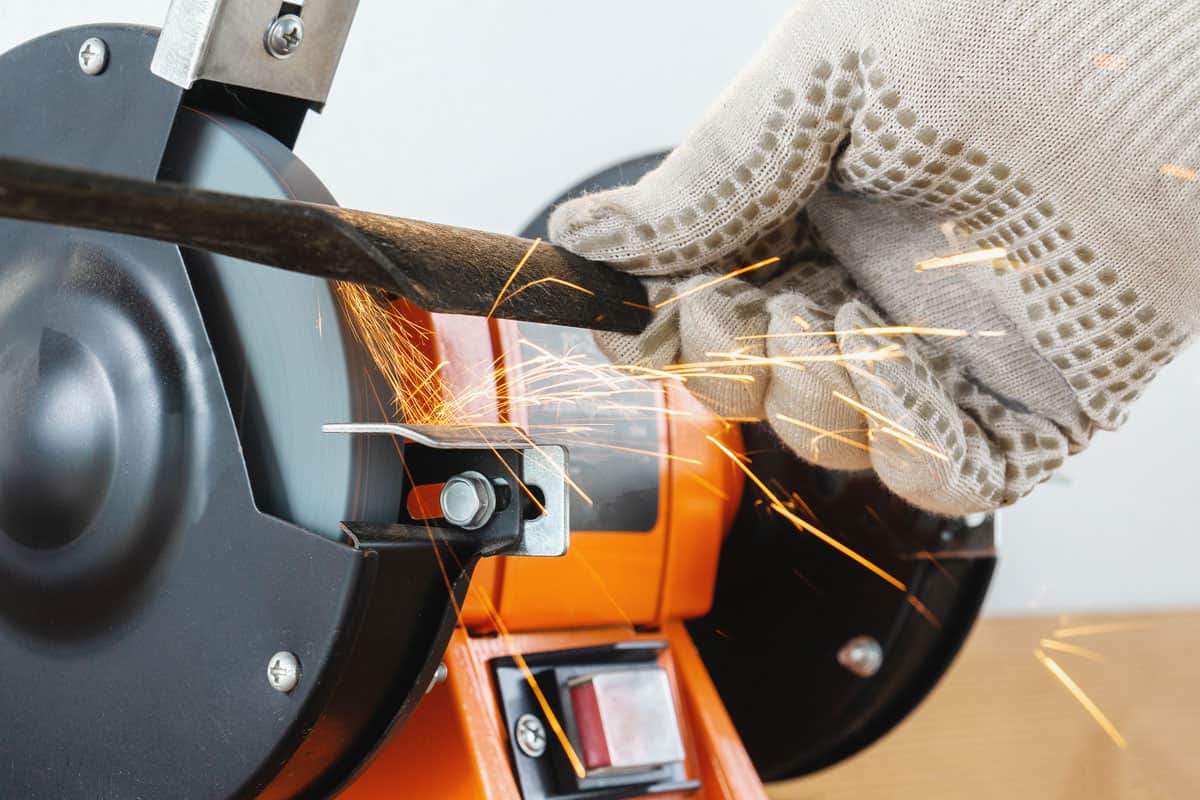
We've taken an in-depth look at the process for sharpening your blade, but when is it necessary?
The amount of time you'll need between sharpenings will depend on a lot of factors. However, here are a few times you should sharpen your blades>
The start of the season
If you live in an area where you get winter off from mowing your lawn, a good time to sharpen your blade will be with the coming of spring.
This will make sure you start your season with a clean, sharp blade. It will also be a good time to remove any rust that may have formed as your lawnmower hibernated.
After hitting rocks or concrete
It happens to all of us. We miss a small rock in our yard or get a little too close to the driveway while mowing. Next thing we know, a tell-tale noise alerts us to our mistake.
If your blade gets damaged in this way, you should sharpen it as soon as possible. You simply won't get as clean a cut mowing with a damaged blade and the damage may spread further if unattended to.
If your grass looks frayed after mowing
After you've mowed your lawn, pick a few blades of grass. The cut across them should be a clean, straight line. If they look frayed and split, you should sharpen your blades.
The frayed grass isn't just a cosmetic concern. Grass that's been split and frayed is more vulnerable to disease as well. Sharp blades will help keep your lawn healthy as well as beautiful.
Final Thoughts
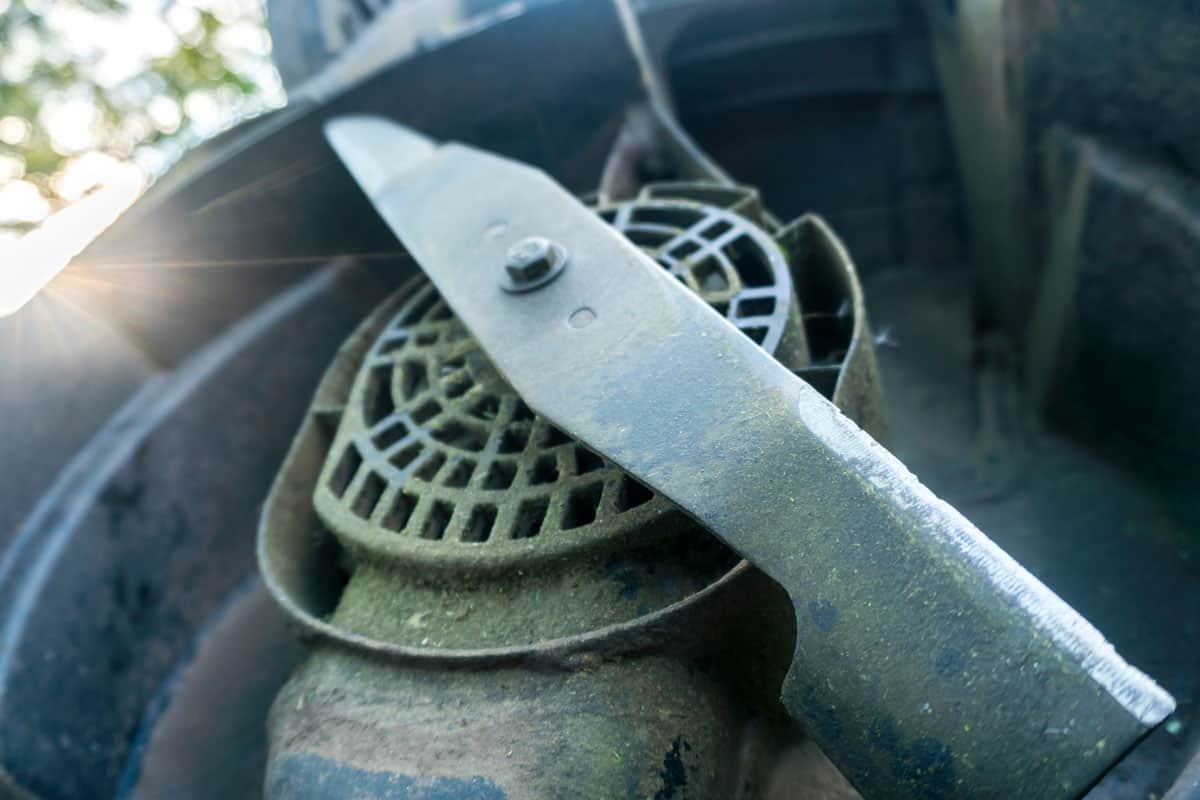
Just like your lawn, your lawnmower requires care and maintenance to be at its best. Now you know more about keeping your lawn mower blades sharp and ready to keep your lawn pristine.
We've also learned that there are multiple ways to sharpen your blades and how to recognize it's time to put your nose to the grindstone.
If you found this article helpful, be sure to check out these great posts:




